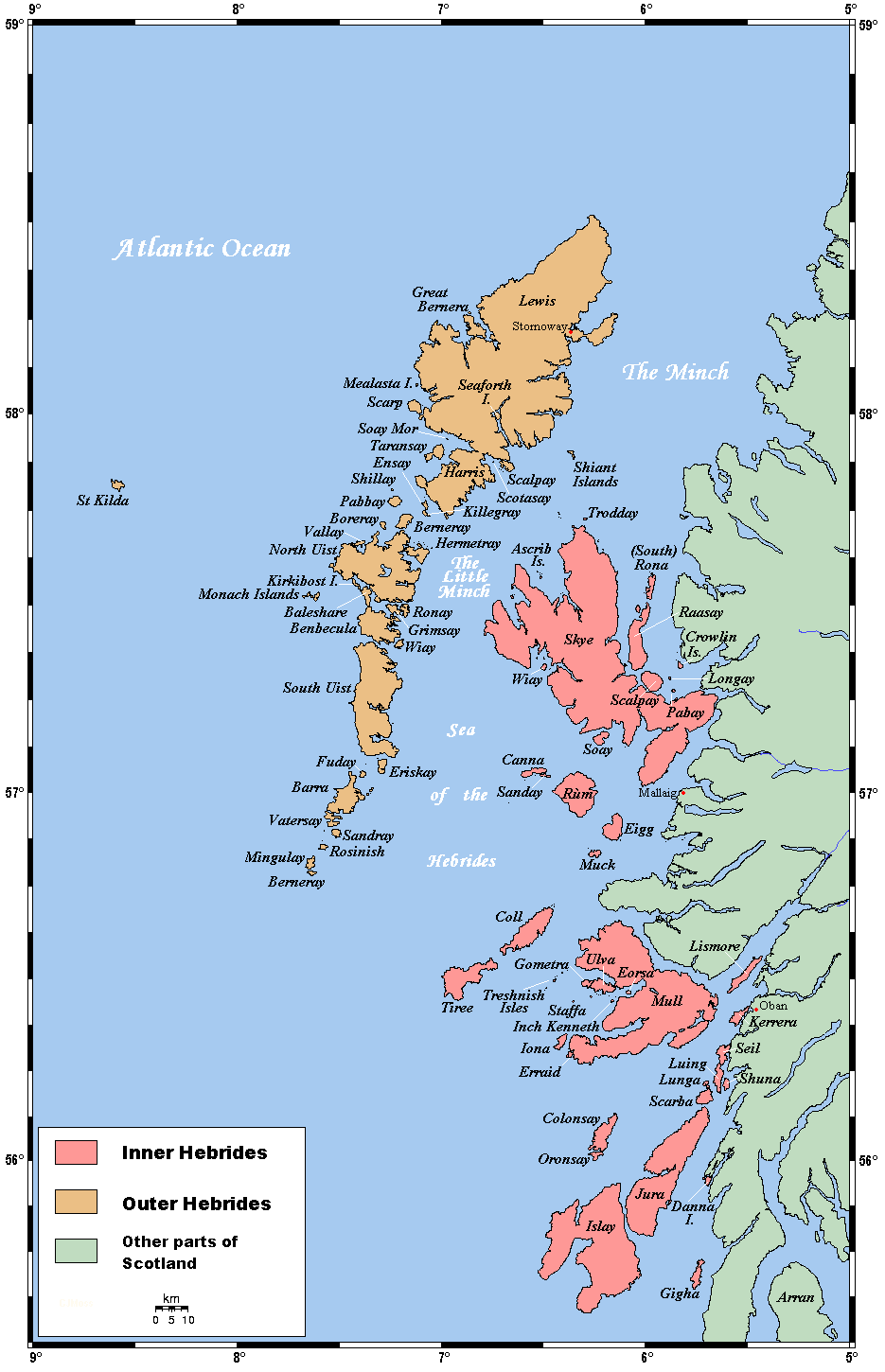| This Week’s Topic… | |||

Best viewed in
|
The Inner Hebredes
After his victory of 1156 Somerled went on to two years later seize control over the Isle of Man itself and become the last King of the Isle of Man and the Isles to rule over all the islands the kingdom had once included. After Somerled's death in 1164 the rulers of Mann would no longer be in control of the Inner Hebrides. The Lord of the Isles would continue to rule the Inner Hebrides as well as part of the Western Highlands as a subject of the King of Scots until John MacDonald, fourth Lord of the Isles, squandered the family's power away. Through a secret treaty with Edward IV of England in 1462, he planned to make himself more or less an independent ruler. When James III of Scotland found out about the treaty in 1475, he forfeited MacDonald's lands. Some were restored for a promise of good behaviour, but MacDonald was unable to control his son who defeated him at the Battle of Bloody Bay (Mull, 1481) and his nephew whose rebellion in 1493 provoked an exasperated James IV to forfeit the lands for the last time in 1493. MacDonald died in 1503. |
||
